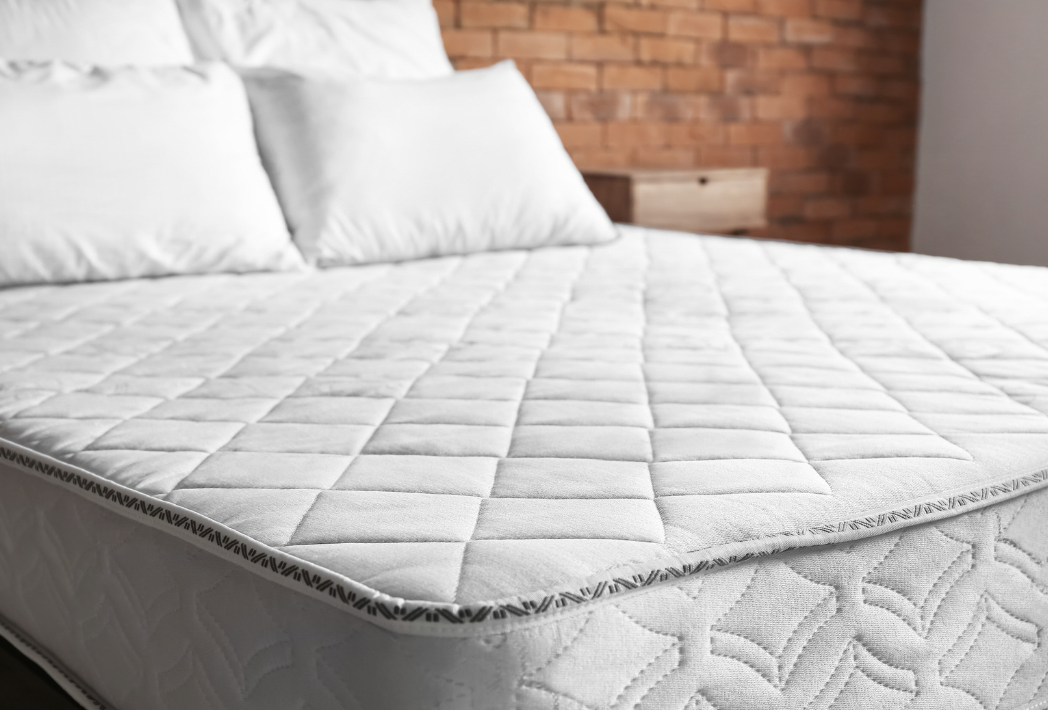
Smart Guide To How to Move a Mattress
This guide walks you through how to move a mattress and some important factors to consider.
Moving is a significant life event that can be both exciting and stressful. It often means a lot of planning, packing, and heavy lifting. One of the most cumbersome items to move is your mattress. Mattresses come in various sizes and materials, and handling them requires care and precision to ensure they arrive at your new home in pristine condition. In this guide, we'll explore the best practices for moving a mattress, whether you're relocating to a new house or simply rearranging furniture within your current home.
Why Moving a Mattress Requires Special Attention
Mattresses are not like other household items. They are large, bulky, and often heavy, making them challenging to maneuver. Moreover, mattresses are designed to provide optimal comfort and support for sleeping, and any damage during the moving process can compromise their performance. To understand the importance of proper mattress transportation, let's look into the reasons why moving a mattress requires special attention:
1. Hygiene and Allergens
Over time, mattresses can accumulate dust, dirt, allergens, and even mold if not properly maintained. During the moving process, it's crucial to protect the mattress from exposure to the elements, which can exacerbate these issues. A clean and hygienic mattress is essential for a good night's sleep and overall health.
2. Structural Integrity
Mattresses are composed of intricate layers and materials that work together to provide support and comfort. Rough handling during a move can lead to structural damage, sagging, and discomfort. To maintain the integrity of your mattress, you must transport it carefully.
3. Size and Weight
Most mattresses are large and heavy, which makes them awkward to move. Improper lifting or carrying techniques can result in physical strain or injury for those handling the mattress.
4. Valuable Investment
Quality mattresses can be expensive. Protecting your investment during a move is not only about preserving your sleep quality but also about ensuring that you don't need to replace a damaged mattress soon after your move.
Pre-Move Preparations

Before you start the actual process of moving your mattress, you should follow several preparatory steps. These will help ensure that your mattress is clean, safe, and ready for transport:
1. Assess Your Mattress
Before moving your mattress, assess its condition. If it's old and no longer comfortable or supportive, this might be the perfect opportunity to replace it. A new mattress will not only ensure better sleep but also make the moving process easier.
2. Clean Your Mattress
Cleaning your mattress is crucial for hygiene and preventing the spread of allergens. Begin by vacuuming it to remove any dust, dirt, or debris. You can also spot clean any stains or spills with a gentle solution of water and mild detergent. Allow the mattress to dry thoroughly before moving it.
3. Protect Your Mattress
Invest in a mattress protector or cover to shield your mattress from dirt, dust, and potential damage during the move. A waterproof cover can be especially helpful in case of unexpected spills.
4. Gather Necessary Supplies
To move your mattress safely, you'll need the following supplies:
Mattress bag or cover
Moving straps or ropes
Packing tape
Bubble wrap or packing paper
A box cutter or scissors
Moving truck or vehicle
Friends or professional movers (for assistance)
Different Mattress Sizes, Different Moving Strategies
The size of your mattress significantly impacts how you should go about moving it. Mattresses come in various dimensions, including twin, full, queen, and king sizes. The larger the mattress, the more challenging it can be to maneuver. Here are some tips for moving mattresses of different sizes:
1. Twin Mattresses
Twin mattresses are the smallest and lightest of the standard mattress sizes, making them the easiest to move. You can usually manage a twin mattress on your own with the help of a friend.
Steps for Moving a Twin Mattress:
Place the mattress in a mattress bag or cover for protection.
Use moving straps or ropes to secure the mattress.
Carry the mattress, one person on each end, taking care to lift it evenly.
2. Full Mattresses
Full-size mattresses are larger and heavier than twin mattresses but are still manageable with two people. If you're moving a full mattress, follow these steps:
Steps for Moving a Full Mattress:
Use a mattress bag or cover to protect it.
Secure the mattress with moving straps or ropes.
Lift the mattress with two people, one on each end.
3. Queen and King Mattresses
Queen and king-size mattresses are considerably larger and heavier. Moving them requires more effort and often more than two people, especially for a king mattress.
Steps for Moving a Queen or King Mattress:
Place the mattress in a mattress bag or cover for protection.
Use multiple sets of moving straps or ropes to ensure stability.
Enlist the help of at least three or four people, one on each corner.
4. Specialty Mattresses
Specialty mattresses, such as memory foam or adjustable mattresses, may require extra care. Check the manufacturer's instructions for specific guidelines on moving these types of mattresses. In many cases, it's best to keep them flat and avoid folding or bending.
Packing and Securing Your Mattress
Once your mattress is prepared and you know how many people you'll need to move it, it's time to pack and secure it properly. Here are the steps to follow:
1. Bag or Cover Your Mattress
Place your mattress in a mattress bag or cover. These are readily available at most home improvement stores or online. These covers are essential to protect your mattress from dirt, dust, and potential moisture during the move.
2. Secure the Mattress
Use moving straps or ropes to secure the mattress. Position the straps or ropes at regular intervals along the length of the mattress, ensuring they are tight and will not shift during transportation. This extra security helps prevent any sliding or shifting inside the moving vehicle.
3. Consider Disassembling the Bed Frame
If your bed frame can be disassembled, it's a good idea to take it apart to make the mattress removal and transportation easier. Remember to keep all screws, nuts, and bolts in a labeled bag to avoid losing them during the move.
4. Protect the Mattress During Transport
During transportation, your mattress should be placed flat to maintain its shape and support. Avoid putting heavy objects on top of the mattress in the moving truck to prevent damage. Additionally, use blankets, bubble wrap, or packing paper to create a barrier between the mattress and any surrounding items.
5. Choose the Right Moving Vehicle
Select a moving truck or vehicle that can accommodate the size of your mattress. Make sure it has enough space and is equipped with straps or anchors to secure the mattress inside.
Moving Your Mattress: DIY vs. Professional Help
The decision to move your mattress yourself or hire professional movers depends on several factors, including your budget, the size of your mattress, and the distance of your move. Here are some considerations to help you decide:
DIY Moving
Pros:
Cost-effective: Moving your mattress on your own or with the help of friends or family can save you money, as you won't need to hire professional movers.
Control: You have control over the entire moving process
Welcome to LaborHutt.com!
Are you looking for skilled professionals to get the job done? Or are you a skilled worker seeking opportunities? Look no further!
At LaborHutt.com, we connect skilled pickup drivers and movers with those who need them. Our platform is easy to use and efficient, ensuring that you find the right match for your needs.
Join LaborHutt.com today and experience the future of pickup and moving!


